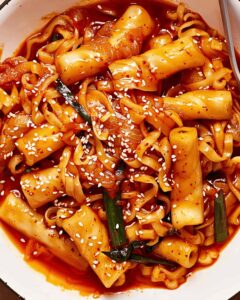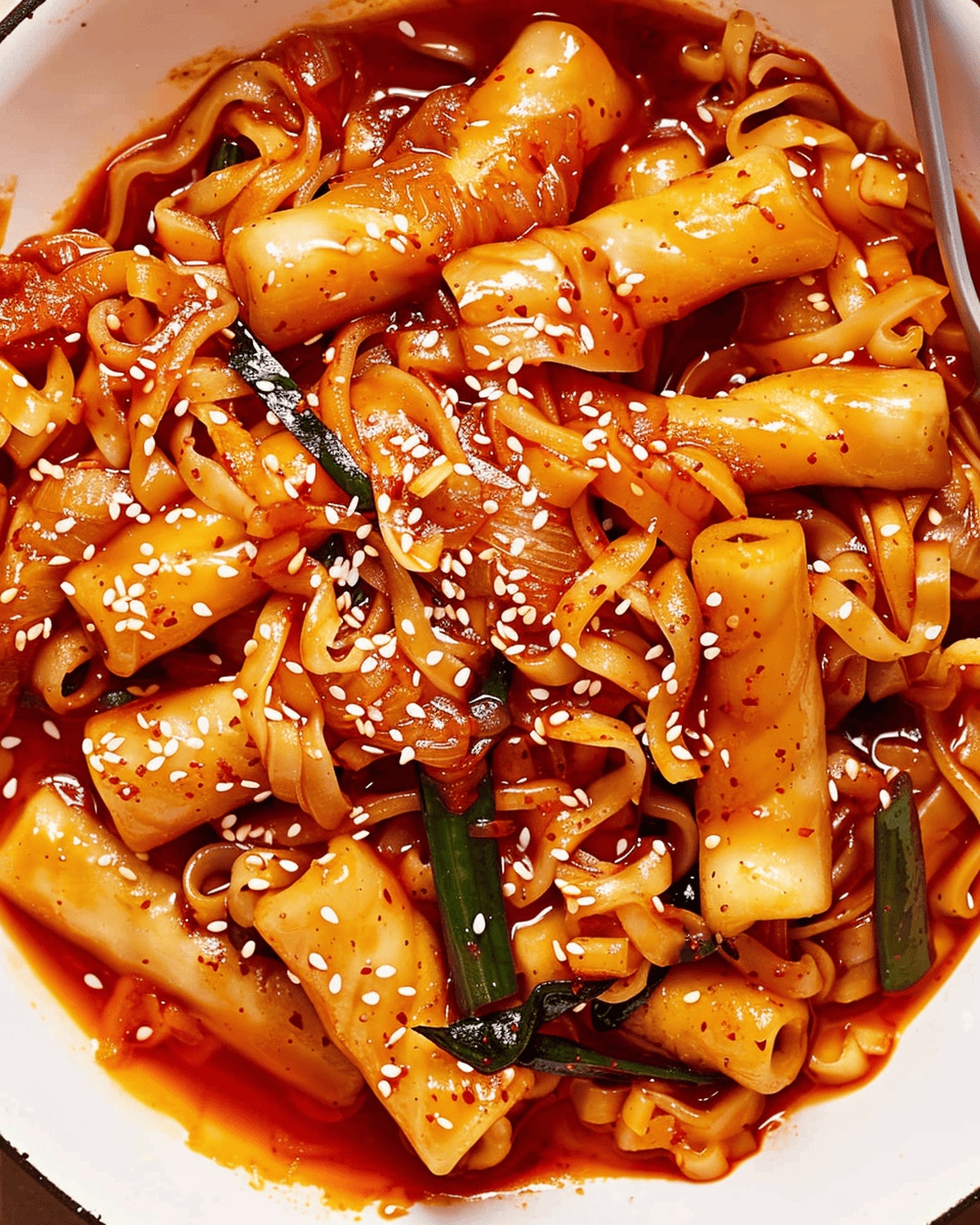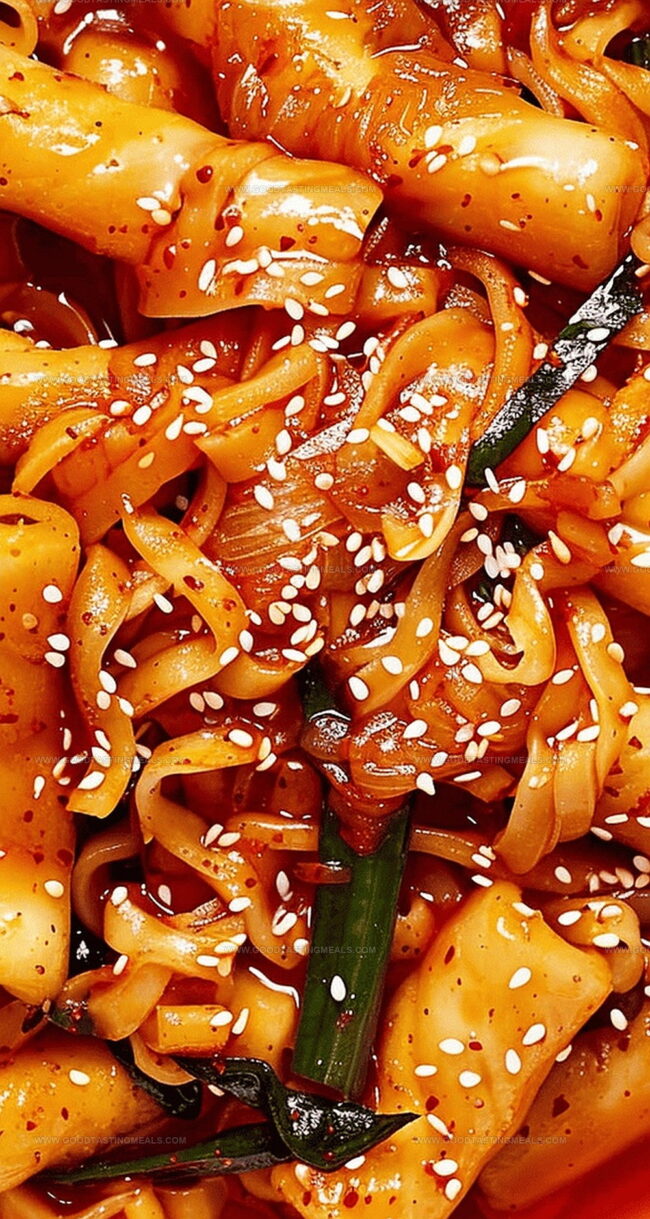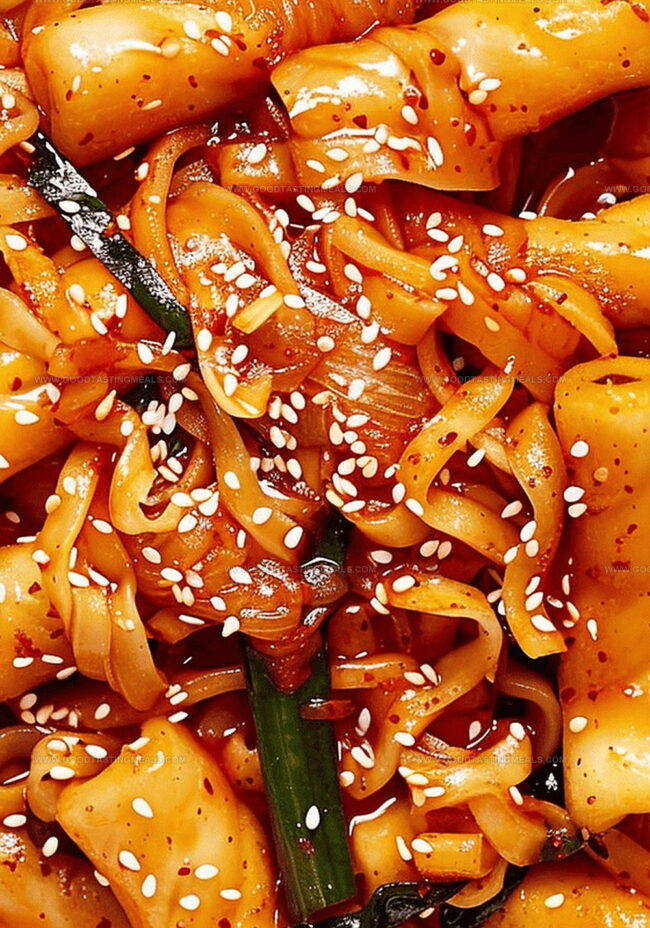The Ultimate Spicy-Sweet Rabokki Recipe for Korean Food Lovers
Korean rabokki blends two beloved street foods into a mouthwatering culinary fusion that sparks immediate comfort and excitement.
Spicy, chewy rice cakes mingle with springy ramen noodles in a fiery sauce that promises unforgettable flavor combinations.
Street vendors across seoul have perfected this delectable dish through generations of passionate cooking techniques.
The harmonious marriage of textures creates a symphonic experience that refines simple ingredients into something extraordinary.
Each bite delivers a complex layering of heat, umami, and satisfying chewiness that leaves you craving more.
Korean home cooks and food enthusiasts have elevated this street food classic into a versatile, crowd-pleasing meal that adapts to individual taste preferences.
Comfort and boldness dance together in this dynamic recipe that connects traditional flavors with modern culinary creativity.
Rabokki Flavor Features
What Goes in Rabokki
Main Ingredients:
Rice Cakes and Fish Cakes:Noodle Component:Sauce and Seasoning Ingredients:Broth and Flavor Base:Garnish Ingredients:Seasoning:How to Cook Rabokki at Home
Step 1: Prepare Ingredients
Thaw fish cake sheets and frozen rice cakes at room temperature. If needed, soak rice cakes in cold water for 10 minutes, then drain.
Step 2: Chop Scallions and Fish Cakes
Slice scallion greens diagonally into 1/2-inch pieces. Cut fish cake sheets into 1-inch strips.
Step 3: Create Broth Base
In a large saucepan, combine water, dried anchovies, and kombu. Bring to a boil for 3 minutes. Remove and discard anchovies and kombu.
Step 4: Cook Ramen Noodles
Add instant ramen noodles to the pot. Cook for 1 minute, stirring to separate. Transfer noodles to a separate bowl using a slotted spoon.
Step 5: Add Spicy Sauce
Stir in gochujang, oligo syrup, and chili powder until fully dissolved. Add rice cakes and fish cakes. Cook on medium-high heat for 2 minutes.
Step 6: Combine and Finish
Return noodles to the pot. Cook for 1 minute until al dente. Turn off heat. Season with salt if needed.
Step 7: Garnish and Serve
Top with chopped scallions and roasted sesame seeds. Serve in individual bowls or directly from the pan. Note that the sauce will thicken slightly as it cools.
Spicy Rabokki Tips to Know
Best Ways to Store and Reheat Rabokki
Tasty Matches for Rabokki
Rabokki Recipe Remixes
Print
Rabokki Recipe
- Total Time: 20 minutes
- Yield: 2 1x
Description
Korean street cuisine meets comfort in this spicy rabokki. Chewy rice cakes and ramen noodles dance in a fiery gochujang sauce, inviting you to savor Seoul’s most irresistible quick-bite sensation.
Ingredients
Main Ingredients:
- 10 ounces (283 grams) frozen Korean rice cake sticks, such as Hansang
- 1 package (about 4.2 ounces or 119 grams) Korean instant ramen noodles, such as Nongshim Shin Original Ramyun
- 5 ½ ounces (156 grams) frozen fried fish cake sheets, such as Choripdong
Flavor Enhancers and Seasonings:
- 2 tablespoons (30 milliliters) gochujang pepper paste
- 2 tablespoons (30 milliliters) oligo syrup or light corn syrup
- 1 tablespoon (15 milliliters) gochugaru red chili powder, preferably fine
- 1 tablespoon (15 milliliters) roasted sesame seeds
Broth Base:
- 3 ½ cups (828 milliliters) water
- 5 medium dried anchovies
- 1 piece (about 4x1-inch) dried kombu
- 3 medium scallions
- Kosher salt (to taste)
Instructions
- Thaw frozen rice cakes and fish cake sheets at room temperature, ensuring they are completely soft and pliable.
- Slice fish cake sheets into 1-inch wide strips and chop scallion greens diagonally into delicate pieces.
- Create a flavorful broth by boiling water with dried anchovies and kombu, extracting maximum umami essence for approximately 3 minutes.
- Remove seafood-based stock components, reserving the aromatic liquid.
- Briefly cook instant ramen noodles in the prepared broth, separating them gently to prevent clumping, then set aside.
- Incorporate gochujang, oligo syrup, and gochugaru chili powder into the broth, whisking until completely integrated and creating a vibrant, glossy sauce.
- Add rice cakes and fish cake strips to the spicy liquid, stirring frequently to ensure even heating and flavor absorption.
- Reintroduce the parboiled ramen noodles into the pot, allowing them to finish cooking and soak up the rich, spicy sauce.
- Adjust seasoning with a touch of kosher salt to balance the flavors.
- Garnish with freshly chopped scallion greens and roasted sesame seeds for textural contrast and aromatic finish.
- Serve immediately, noting the sauce will naturally thicken as it cools, creating a luscious coating for the ingredients.
Notes
- Quick-thaw trick saves time by letting frozen ingredients reach room temperature or using cold water method.
- Precise cutting technique ensures uniform fish cake and scallion sizes for even cooking and appealing presentation.
- Anchovy and kombu broth creates a rich, umami-packed base that elevates the entire dish’s depth of flavor.
- Instant ramen adds textural complexity and helps absorb the spicy-sweet gochujang sauce.
- Balance sweet and spicy elements with oligo syrup and gochugaru, creating a harmonious Korean street food experience.
- Sesame seeds provide a nutty finish and delightful crunch, transforming the dish from good to restaurant-worthy.
- Prep Time: 10 minutes
- Cook Time: 10 minutes
- Category: Dinner, Snacks
- Method: Boiling
- Cuisine: Korean
Nutrition
- Serving Size: 2
- Calories: 490
- Sugar: 10 g
- Sodium: 1200 mg
- Fat: 8 g
- Saturated Fat: 1 g
- Unsaturated Fat: 5 g
- Trans Fat: 0 g
- Carbohydrates: 80 g
- Fiber: 4 g
- Protein: 14 g
- Cholesterol: 15 mg




Liam O’Brien
Founder & Recipe Developer
Expertise
Education
Dublin Institute of Technology (now Technological University Dublin)
Ballymaloe Cookery School, County Cork, Ireland
Liam O’Brien is the co-founder and kitchen soul behind Good Tasting Meals, a chef who believes that cooking shouldn’t feel stressful or complicated.
He earned his culinary stripes at Technological University Dublin and polished his farm-to-table skills at Ballymaloe Cookery School. With over 15 years flipping pans and stirring up stories, Liam has worked in family cafés, bustling bistros, and everything in between.
At Good Tasting Meals, Liam brings you recipes that feel like home: cozy, simple, and full of flavor.